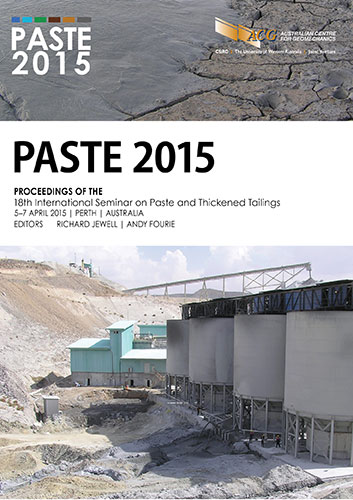Comparing long stroke 20’ (508 mm) with short stroke 14’ (356 mm) piston diaphragm pumps

|
Authors: Krimpenfort, H Paper is not available for download Contact Us |
DOI https://doi.org/10.36487/ACG_rep/1504_17_Krimpenfort
Cite As:
Krimpenfort, H 2015, 'Comparing long stroke 20’ (508 mm) with short stroke 14’ (356 mm) piston diaphragm pumps', in R Jewell & AB Fourie (eds), Paste 2015: Proceedings of the 18th International Seminar on Paste and Thickened Tailings, Australian Centre for Geomechanics, Perth, pp. 247-255, https://doi.org/10.36487/ACG_rep/1504_17_Krimpenfort
Abstract:
Over the years the requirement for high flow rate piston diaphragm pumps has increased. In the eighties capacity of such pumps was limited to 300-400 m³/h. In the following decades the size and length of pipelines in the mining industry has increased and pump manufacturers have developed pumps which met these requirements. Currently the maximum flow rate of single piston diaphragms is in the range of 700-750 m³/h at pressures of up to 80 bar. The type of pump for such applications is normally of triplex single acting or duplex double acting design. The stroke length of these pumps is 504-556 mm and stroke rate is usually, in order to achieve these high capacities, quite high which results in high piston velocities. These pumps need a relatively high suction pressure which needs to be provided by a centrifugal type charge pump. In order to fill the pump´s diaphragm chambers with slurry at such high piston velocities, the charge system which provides the required suction pressure becomes very critical. By far, most pumping problems are due to lack of suction pressure and subsequent cavitation. This paper will show that piston diaphragm pumps with a shorter stroke and in triplex double acting configuration are capable of the same capacities at much lower piston speeds. This results in optimised suction conditions, longer lifetime of bearings and wear parts and safer maintenance conditions. The same type of pump is also able to provide flow rates of up to 1,200 m3/h at 80 bar discharge pressure at optimum operating and maintenance conditions. The application of these high flow rate pumps will result in fewer operating pumps, smaller pump stations and lower operating costs.
© Copyright 2026, Australian Centre for Geomechanics (ACG), The University of Western Australia. All rights reserved.
View copyright/legal information
Please direct any queries or error reports to repository-acg@uwa.edu.au
View copyright/legal information
Please direct any queries or error reports to repository-acg@uwa.edu.au